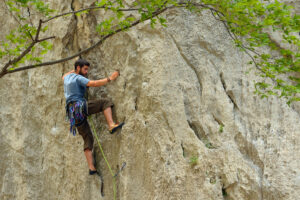As global tourism grows and tourists seek new experiences and destinations, adventure travel continues to expand. From 2009 to 2012, the adventure travel market had an estimated average yearly growth of 65 percent.

This is one of the findings of the newly released Adventure Tourism Market Study – a consumer report by The George Washington University (GW) conducted in partnership with the Adventure Travel Trade Association (ATTA).
In 2012, nearly 42 percent of travellers from Europe, North America and South America reported an adventure activity as the main activity of their last trip, which would project to an adventure travel market worth $263 billion. This is a significant increase from the 2010 Adventure Tourism Market Study in which the adventure tourism market from these regions was valued at $89 billion. According to the United Nations World Tourism Organization (UNWTO), these three regions account for 69 percent of overall international departures. The percentage of international travellers from the Americas and Europe classified as adventure travellers rose from 26.3% in 2009 to 41.9% in 2012.
On average, adventure traveller per trip spending (excluding airfare and gear) increased from $593 in 2009 to $947 in 2012, a yearly increase of nearly 20%. The average length of an adventure trip was ten days.
Adventure travellers are younger than non-adventure travellers, with an average age of 36. Compared to non-adventure travellers, adventure ones were more likely to use professional services such as guides, instructors, tour operators, or other services. Adventure travellers are planning for their trips by researching online and consulting friends and family, and are recommending trips by posting on social media sites.
The findings of the study are also confirmed by the latest news we hear from Sweden and Finland on wilderness and wildlife tourism. Interest in Swedish wildlife safaris approaches a record high, Nature’s Best informs. A study shows that safari tourism is heading for its best year ever there. Swedish nationals are still the most numerous safari tourists in Sweden, but a growing number are coming from other countries like Netherlands and Great Britain. Seal and beaver safari seem to attract mostly Swedes, while elk safaris are favourite amongst the foreign visitors.
During the summer of 2013, Kajaani University of Applied Sciences (Finland) has surveyed Finnish entrepreneurs that offer wildlife viewing products. The survey is expected to be published by the end of the year. According to the preliminary results, that are not yet officially published, the total number of wildlife viewing clients in the 22 enterprises that have responded the inquiry was 5051, of which 63% were foreign visitors. The most important tourist generating countries were UK and Germany. Also Netherlands, Norway, Italy, Switzerland, Sweden, Spain, France, Russia, Belgium, Japan and USA were mentioned as important countries of departure. The annual sales revenue of the responded wildlife watching enterprises was in 2012 altogether 2.1 million euros. The total tourism sales turnover effect from the wildlife watching products is of course much greater than this number, as it includes also ferry lines, airlines, car rentals, gasoline, restaurants, hotels and other tour products in the same general area and the country.
